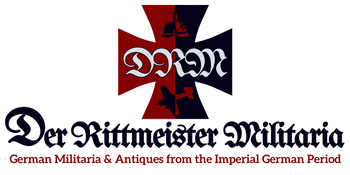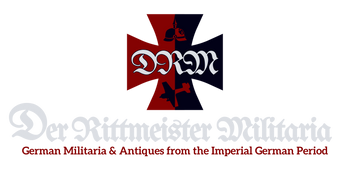Lübeck (Freie und Hansestadt Lübeck)
CLICK HERE FOR ALL PRODUCTS RELATED TO LUBECK
Basic Information
- Official Name: Free and Hanseatic City of Lübeck (Freie und Hansestadt Lübeck)
- Capital: Lübeck (itself a city-state)
- Motto: "Concordia domi foris pax" (Harmony at home, peace abroad)
- Established: 1226 as a Free Imperial City under the Holy Roman Empire; retained autonomy through various political shifts.
- Dissolution: Transitioned to part of Schleswig-Holstein in 1937 after the Greater Hamburg Act.
-
Key Symbols:
- Coat of Arms: A red double-headed eagle on a silver field, symbolizing imperial favor and autonomy.
- Flag: Red and white horizontal stripes.
Geographical Overview
-
Location:
Situated on the Baltic coast in northern Germany, near Schleswig-Holstein. -
Size:
A small, city-state dominated by its urban center and surrounding harbor areas. -
Land Features:
- Trave River: Provided access to the Baltic Sea, establishing Lübeck as a key port city.
- Bay of Lübeck: A hub for maritime trade and naval activity.
Historical Timeline
-
Early Lübeck:
- 12th Century: Founded as a trading settlement, quickly grew due to its strategic location.
- 1226: Declared a Free Imperial City by Emperor Frederick II, gaining political and economic autonomy.
-
Hanseatic League Era (13th–17th Centuries):
- Lübeck became the leading city of the Hanseatic League, a powerful medieval trade alliance.
- Dominated trade in northern Europe, exporting salt, grain, and fish.
-
Imperial Germany (1871–1918):
- Retained its status as a Free City within the German Empire, focusing on trade and culture.
- Played a minor role politically but remained a cultural and economic center.
-
Decline (1918–1937):
- Transitioned to a Free State after World War I but was absorbed into Schleswig-Holstein in 1937 under Nazi Germany.
Notable Leaders
- Lübeck was governed by a council of merchants, with Bürgermeisters (Mayors) holding executive authority.
-
Notable Figures:
- Heinrich Sudermann: A prominent figure in the Hanseatic League’s management during Lübeck’s golden age.
- Thomas Mann (1875–1955): A native of Lübeck and Nobel Prize-winning author, who chronicled the city’s legacy in his novels.
Military and Political Strength
-
Military Contributions:
- Lübeck’s fleet protected Hanseatic trade routes, making it a dominant naval power in the Baltic during the Middle Ages.
- Contributed ships and resources to the Imperial Navy under the German Empire.
-
Political Role:
- As a Free City, Lübeck focused on trade diplomacy and maintaining its autonomy within the German Empire.
- Its influence waned with the decline of the Hanseatic League.
Cultural Contributions
-
Architecture:
- Holstentor: A medieval gate symbolizing Lübeck’s wealth and influence, now a UNESCO World Heritage Site.
- St. Mary’s Church (Marienkirche): An iconic Gothic structure and the largest brick church in the world.
- Town Hall (Rathaus): A blend of Gothic and Renaissance styles, reflecting Lübeck’s prosperity.
-
Arts and Literature:
- Lübeck fostered cultural growth through its Hanseatic connections, influencing northern European art and literature.
- Thomas Mann’s novel Buddenbrooks immortalized Lübeck’s merchant legacy.
-
Education and Science:
- Promoted maritime and legal education through its guilds and merchant associations.
- A center for early cartography and navigation advancements.
-
Cuisine:
- Famous for Lübecker Marzipan, a sweet almond-based confection exported worldwide.
- Traditional dishes like Labskaus (a sailor’s meal of corned beef and potatoes) reflected its maritime heritage.
Fall of Lübeck
-
World War I (1914–1918):
- Economic hardships and reduced trade weakened Lübeck’s prosperity.
-
German Revolution (1918):
- Transitioned to a Free State within the Weimar Republic, losing political significance.
- 1937: Absorbed into Schleswig-Holstein under the Greater Hamburg Act, effectively ending Lübeck’s independence.
Connections to Products
-
Cultural Artifacts:
- Miniatures and artwork featuring landmarks like the Holstentor and St. Mary’s Church.
- Hanseatic League memorabilia, including coins and trade documents.
-
Military Memorabilia:
- Naval artifacts from Lübeck’s fleet, such as ship models and navigational tools.
- Medals and insignia related to the city’s contributions to the Imperial Navy.
-
Historical Documents:
- Maps, charters, and treaties from Lübeck’s Hanseatic League era.
- Administrative records showcasing its governance and trade alliances.
-
Tourism and Culinary Items:
- Lübecker Marzipan packaging, recipes, and molds.
- Guidebooks and postcards featuring the city’s medieval landmarks and port.
-
Educational Contributions:
- Publications on maritime law and navigation advancements developed in Lübeck.
- Artifacts from the city’s guilds and merchant associations.











